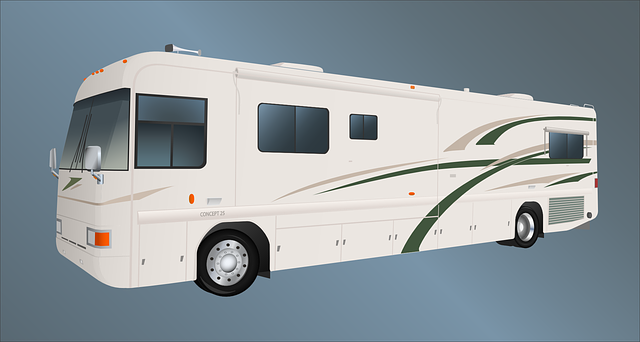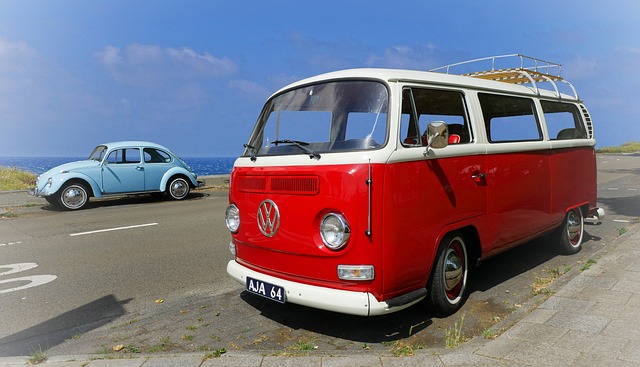When choosing an RV battery for cold weather, it's essential to prioritize robustness against low temperatures. AGM batteries are a top choice due to their ability to operate down to -40°F (-40°C), while lithium-ion batteries offer the most resilience in harsh conditions, maintaining efficiency even in freezing temperatures. High CCA ratings ensure consistent performance at very low temperatures. Maintaining the state of charge and using insulated casings or supplementary heating elements are critical for extending battery operational lifespan in sub-zero conditions. A high ampere-hour (Ah) rating is crucial as it quantifies the power a battery can deliver under cold snaps, particularly important for maintaining heating systems and essential appliances. Proper insulation, regular maintenance, and a well-designed electrical system with a disconnect switch are necessary to ensure RV batteries function reliably in winter weather. Regularly check and maintain batteries, whether they're lead-acid, AGM, or lithium, to safeguard against the effects of cold temperatures. If possible, store batteries indoors in climate-controlled conditions when not in use. By following these guidelines, RV owners can keep their RV batteries powered and ready for adventure, regardless of the thermometer reading.
When winter’s chill sets in, ensuring your RV batteries remain reliable is paramount for any road trip or seasonal stay. This guide delves into the nuances of selecting RV batteries suited for cold weather, emphasizing key performance factors and maintenance strategies to keep your power sources operational under frosty conditions. From understanding battery types and their tolerance to frigid temperatures, to mastering the ins and outs of capacity and ampere-hour ratings in freezing climates, this article equips you with a comprehensive approach to installing and maintaining your RV batteries when the mercury dips below zero. Stay powered, no matter the cold.
- Understanding RV Battery Types and Their Performance in Cold Conditions
- Key Factors to Consider When Selecting RV Batteries for Cold Weather
- The Importance of Battery Capacity and Ampere-Hour Ratings in Freezing Temperatures
- Strategies for Battery Insulation and Maintenance During Winter Months
- Step-by-Step Guide to Installing and Maintaining RV Batteries in Subzero Environments
Understanding RV Battery Types and Their Performance in Cold Conditions

When braving the cold with an RV, selecting the right RV batteries is crucial for maintaining power and comfort. There are primarily two types of RV batteries: lead-acid and absorbent glass mat (AGM) batteries, as well as lithium-ion options. Lead-acid batteries tend to struggle in cold weather conditions due to their liquid electrolyte, which can freeze and disrupt the chemical reactions necessary for energy storage and release. Conversely, AGM batteries offer a more robust performance in colder climates because they have a gel-like electrolyte that doesn’t solidify at low temperatures, ensuring better consistency in power output. Lithium-ion batteries stand out as a top choice for cold weather usage, thanks to their inherent characteristics; they don’t suffer from the same freezing issues and can provide reliable power even when ambient temperatures dip significantly.
Choosing the right RV battery type also involves understanding how temperature affects battery performance. Lead-acid batteries generally have a lower operational range, often failing at temperatures below 32°F (0°C). AGM batteries are more resilient, typically operating effectively down to -40°F (-40°C) and above, making them a preferred option for cold weather RVers. Lithium-ion batteries offer the best performance in cold conditions, often maintaining their efficiency at temperatures that would render other types of batteries ineffective. When selecting an RV battery, it’s essential to consider not only the brand and capacity but also how well it will perform under the specific conditions you’ll encounter on your journey. Ensuring your battery choice is well-suited for cold weather can mean the difference between comfort and discomfort, especially in critical applications like heating, lighting, and powering essential electronics.
Key Factors to Consider When Selecting RV Batteries for Cold Weather

When selecting RV batteries suitable for cold weather, it’s crucial to consider the battery type and its capacity to handle low temperatures without losing efficiency. Deep-cycle lead-acid batteries, such as flooded lead-acid (FLA) or absorbent glass mat (AGM) types, are often preferred due to their robustness in extreme conditions. AGM batteries, for instance, offer superior performance in cold environments compared to traditional lead-acid varieties because of their valve regulated design that minimizes the risk of freezing and rupturing when temperatures drop. Another key factor is the battery’s cold cranking amps (CCA) rating, which indicates how well the battery can deliver current at very low temperatures, typically -18 degrees Celsius (-0 degrees Fahrenheit). Always opt for batteries with a higher CCA to ensure they maintain their power output when facing the chill of winter. Additionally, consider the state of charge maintenance during cold spells. Batteries discharge slower in colder conditions, so it’s essential to have a charging system that adapts to this, preventing deep discharges that can diminish battery life over time. Lastly, insulation is your ally against the cold; look for batteries with insulated enclosures or additional heating options to keep them operational and prolong their lifespan in sub-zero environments. Selecting an RV battery tailored for cold weather involves a combination of choosing the right type, understanding its performance at low temperatures, and ensuring proper charging and insulation to guarantee your power needs are met throughout the year.
The Importance of Battery Capacity and Ampere-Hour Ratings in Freezing Temperatures

When braving the cold, it’s imperative to have reliable power sources in your RV, and understanding the role of battery capacity and ampere-hour (Ah) ratings becomes crucial. In freezing temperatures, the chemical reactions within lead-acid or deep-cycle batteries that provide electrical energy can slow down significantly. This is where a high-capacity RV battery shines. A larger battery capacity generally means more power is available to run your heating system and other essential appliances during the cold snap. Additionally, when temperatures drop below the optimal range for these batteries, their ability to hold a charge diminishes. Here, ampere-hour ratings play a pivotal role; they indicate how much electric charge a battery can supply over a period of one hour at 68°F (20°C). Choosing an RV battery with a higher Ah rating ensures you have more power to draw upon in cold conditions, compensating for the reduced output and maintaining your energy needs without compromise. Incorporating an RV battery with robust capacity and high Ah ratings into your setup is essential for handling the demands of cold weather, ensuring your RV remains a comfortable haven even when the mercury dips.
Strategies for Battery Insulation and Maintenance During Winter Months

When the cold weather sets in, RV battery performance can be significantly impacted if proper insulation and maintenance strategies are not implemented. To maintain optimal battery functionality during the winter months, it is crucial to understand how temperature affects battery chemistry. Lithium and AGM (Absorbent Glass Mat) batteries generally handle cold better than traditional lead-acid batteries, with lithium batteries having a clear edge in performance at low temperatures. However, even these types of RV batteries require protection from the harshest elements.
Insulating your RV batteries is a key step to preserving their capacity and longevity in cold weather. Use insulation materials specifically designed for this purpose, such as thermally reflective foil or closed-cell foam, to cover the batteries. Ensure there are no gaps where cold air can penetrate. Additionally, it’s beneficial to position the batteries in a compartment that receives sunlight during the day, as the heat absorbed will help maintain a higher temperature. Regular maintenance includes keeping the battery terminals clean and free of corrosion, ensuring connections are tight, and checking fluid levels if applicable. A trickle charger or battery maintainer set to a low charge rate can also prevent batteries from fully discharging, which is common during extended periods of non-use. Properly insulating and maintaining your RV batteries through the winter will not only protect them from the cold but also ensure they are ready for use when the warmer seasons return.
Step-by-Step Guide to Installing and Maintaining RV Batteries in Subzero Environments

When preparing your RV for cold weather, ensuring that your RV batteries remain functional is crucial. Here’s a step-by-step guide to installing and maintaining RV batteries in subzero environments. Firstly, select high-quality RV batteries designed for cold temperatures, such as deep-cycle batteries with lithium or AGM (Absorbent Glass Mat) technology. These types of batteries are less prone to freezing and can handle low-temperature conditions better than traditional lead-acid batteries.
Before installation, ensure the batteries are fully charged; this will help prevent them from freezing as they have a higher voltage. Place the batteries in an insulated compartment or box to protect them from extreme cold. Use a battery heater or thermostat-controlled heating device to maintain optimal temperatures, typically between 30°F and 70°F (-1°C to 21°C). During installation, secure the batteries in place using non-metallic straps to avoid conductive paths that could lead to short-circuiting in cold conditions where materials contract differently.
Regularly monitor the battery’s state of charge and voltage levels, especially during extended periods of non-use or when temperatures are particularly low. In cold weather, chemical reactions within the battery slow down, which can reduce capacity and efficiency. To maintain your RV batteries in top condition, consider removing them from the RV when not in use and storing them in a controlled environment where they won’t be exposed to harsh temperatures.
For maintenance, regularly check the water levels in flooded lead-acid batteries, ensuring they are fully charged to prevent freezing. In AGM or lithium batteries, monitor the electrolyte levels as well. After use, clean any corrosion from terminals and connections, and apply a protective coating to prevent cold-weather corrosion. Lastly, ensure that your RV’s electrical system is properly designed to handle the load of the batteries and includes a disconnect switch for safety. With these steps, you can ensure your RV batteries perform reliably even in the most challenging cold weather conditions.
When confronting the challenges of cold weather, selecting the right RV batteries is crucial for ensuring reliable power and comfort on your travels. This article has outlined the essential considerations for choosing the most suitable batteries for freezing conditions, emphasizing the types available, their performance in cold environments, and the importance of capacity and ampere-hour ratings. Additionally, we’ve provided strategies for insulating and maintaining your RV batteries to function optimally during winter months. By following our step-by-step guide on installation and upkeep in subzero climates, you can rest assured that your RV batteries will perform when you need them most. Remember, the right battery choice combined with proper care makes all the difference for a successful RV adventure in cold weather regions.
